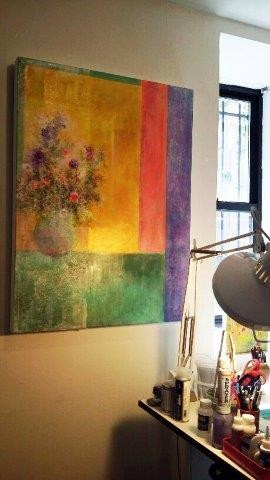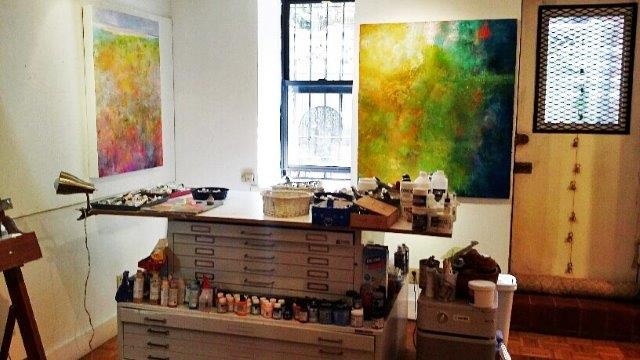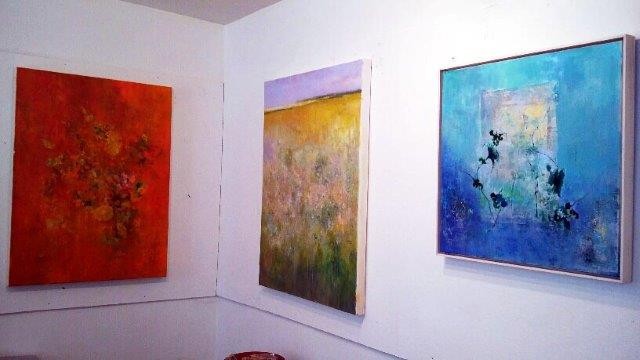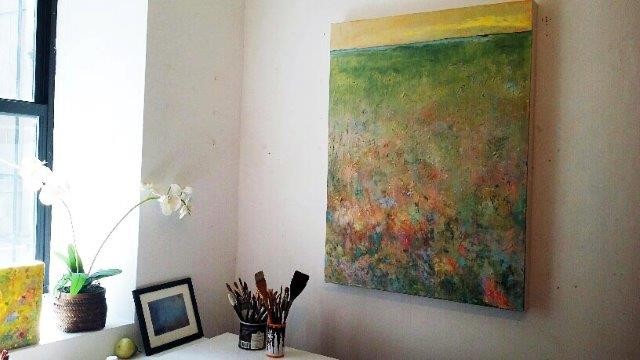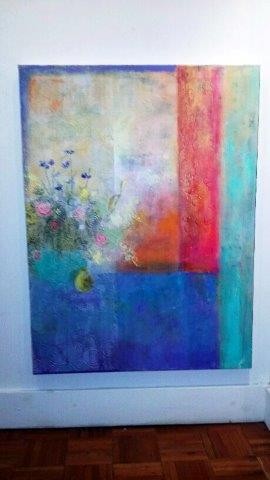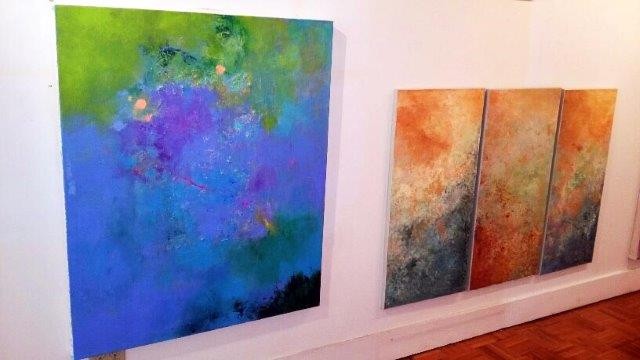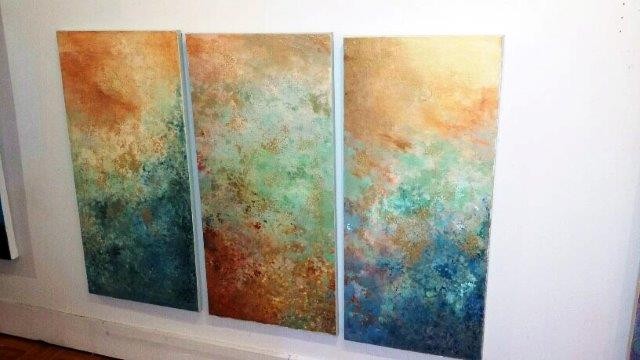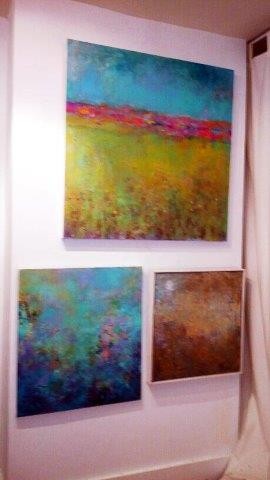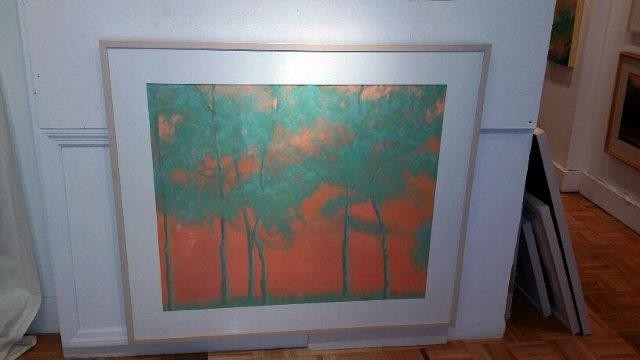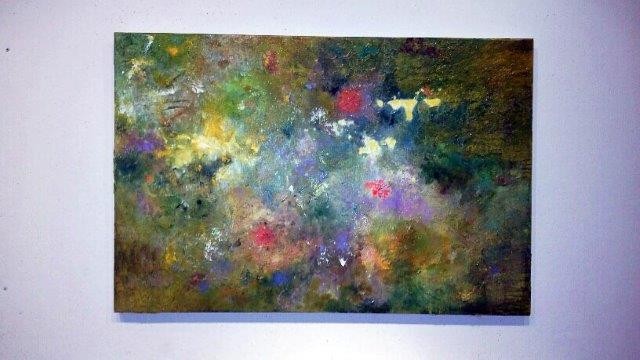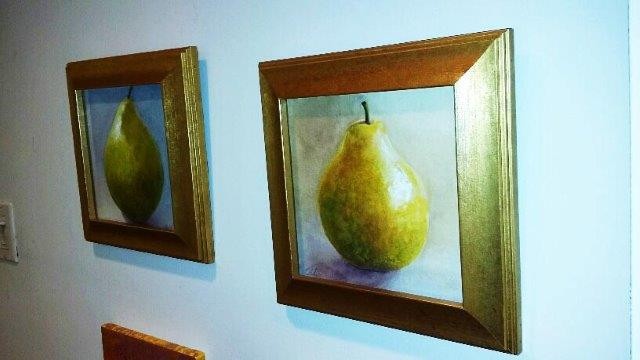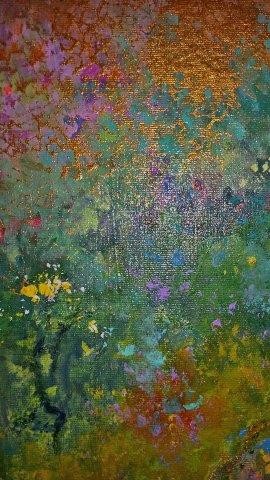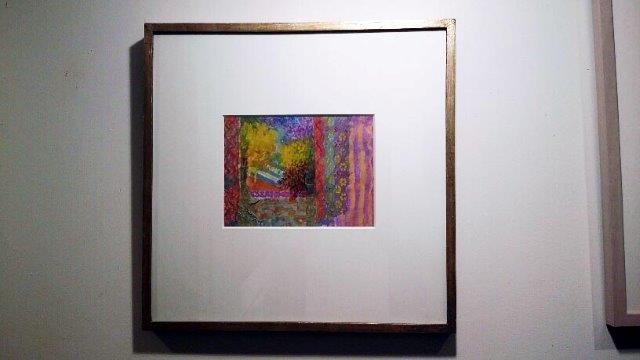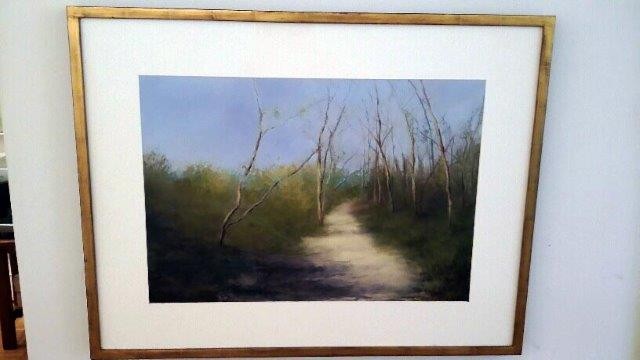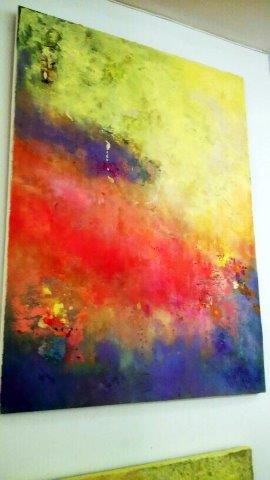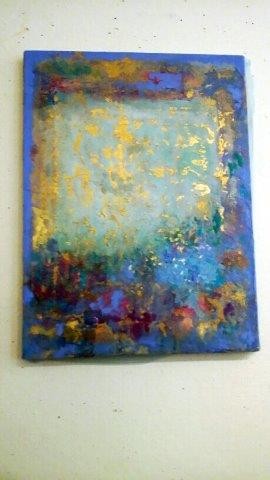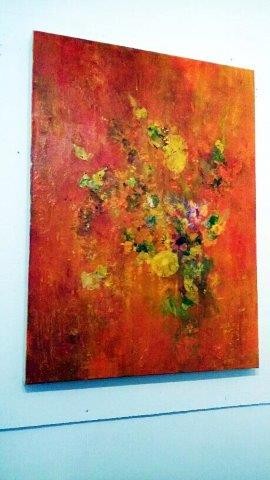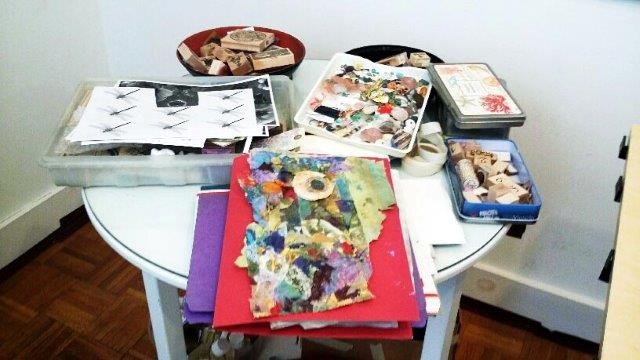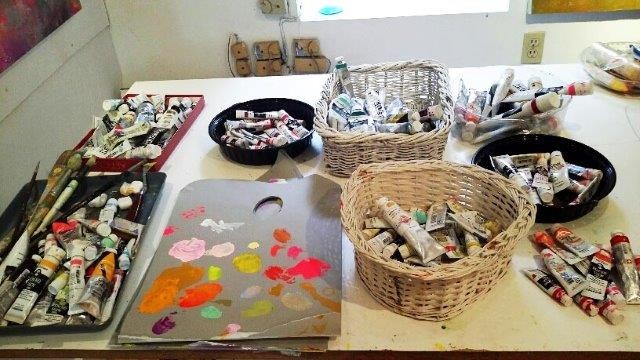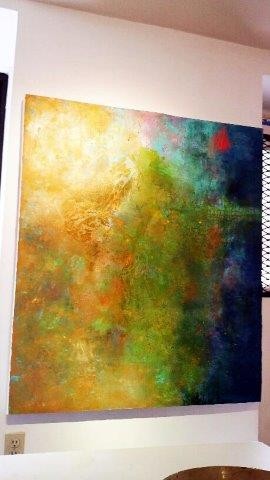Interview
Dr. Roberta E. Zlokower
May 3, 2016
I had the pleasure, on one of these recent cold, damp spring days, to visit Lois Gold’s very inviting artist studio on the Upper East Side. It’s a well-organized, casual space, with Lois’ art tools, collage materials, finished paintings, pastels, and prints, and a few works in progress. Ms. Gold also teaches groups and gives private art lessons in her studio. Ms. Gold’s renowned, award-winning works, including landscapes, abstract, monoprints, and treescapes, have been shown in solo and group exhibitions, art galleries, and museums. I enjoyed the tour and noted our afternoon conversation below. Lois Gold can be contacted at the email above, and the works seen in photos below are all for sale. Each painting in the studio is unique in its own impression. You will see colorful, abstract works, as well as works composed with fanciful collage. Others will transport you to a beachscape, garden, or forest.
REZ: How many years have you been painting as a professional, and how did your career evolve?
LG: My parents were art collectors, and I grew up surrounded by art. I did ceramics and sculpture in college, but it was not until I took a watercolor class that I decided that I wanted to paint as a career. I have been painting for over thirty years, evolving from a realistic landscape painter on paper to painting abstractly with mixed media and acrylic on canvas.
REZ: I love the way you include collage in your work. Could you briefly explain the process, and what's in your collage collections, ready to use in the future, anything new? How do you wrap the materials onto canvas? Do you also paint with collage onto wood?
LG: I collect handmade collage papers, stencils, stamps, gels, and different mediums, all of which I use as an under-painting. I layer them spontaneously, and they are applied with matte medium and glass-beaded gel under a layer of acrylic paint. I then might add oil pastel and more collage, before I glaze a final coat of acrylic to unify the painting.
REZ: What was it like to study at the National Academy of Design? That's a gorgeous building. I've attended events there over the years.
LG: I studied life drawing every day for two years at the National Academy of Design. I worked in charcoal and pastel. I enjoyed the warm atmosphere and helpful teachers.
REZ: You keep artist biographies, like Bonnard's, in your studio. Which artists, particularly, have influenced you and how?
LG: When I was twelve years old, I saw the Monet water lilies at the Musée de l’Orangerie in Paris. I remember being surrounded by these genius color field, enormous paintings, and having my first really intense emotional and spiritual reaction to art. Bonnard, Monet, Turner, and William Merritt Chase have been the biggest influences on the way I strive to paint - all great colorists who became more and more abstract as they aged.
REZ: Do you have any works in exhibition now or upcoming in 2016? Do you have showings in your studio?
LG: I have exhibited in galleries throughout the United States for many years, and I like to sell directly from my studio. It is always fun to meet collectors and get to know them.
REZ: Your website lists works in categories. One category is "Monoprints". Please briefly describe what a monoprint is, and also the nature of your "Treescapes" and "Landscapes".
LG: My series of tree paintings are based on complementary colors, and negative and positive space. I used chalk pastels for these paintings done on paper. My landscape paintings were inspired by my time spent in the Berkshire Mountains, Martha’s Vineyard, and the South shore of Long Island. Two years ago, I studied the art of monoprints with a wonderful Japanese printmaker, named Fumiko Toda in a small class. Monoprints and monotypes are created by manually adding or removing oil based inks from a plate or a piece of plexiglas.
REZ: Your "Early Work" includes mostly landscapes at the beach, long distance views, sand dunes, and trees. What inspired you to evolve to abstract and monoprint works?
LG: I changed painting styles because I needed a new challenge. Wanting to avoid repetition, I began to paint on canvas, loving the concentration on color, pattern, and collage.
REZ: What advice would you give a young, aspiring artist in today's economy and culture?
LG: The art world has changed so radically. I would advise a young artist to use social media, to have a well-organized and professionally photographed web site, and to get out and mingle with other artists and gallerists.
